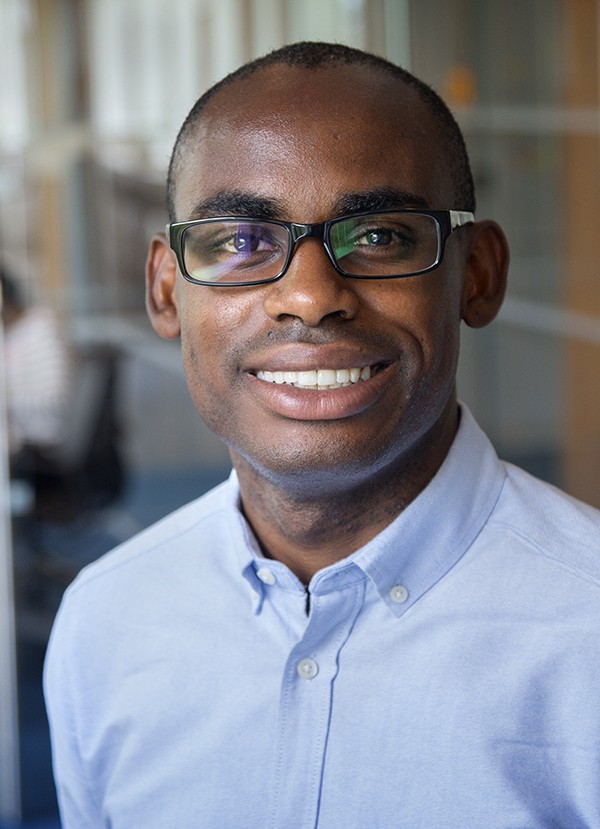Cornell experts working to increase vaccine acceptance
By Tom Fleischman
Developing COVID-19 vaccines was only half the battle – what remains is expanding access, and convincing certain segments of the population to get the shot.
Cornell experts – including Neil A. Lewis Jr. ’13, assistant professor of communication and social behavior in the College of Agriculture and Life Sciences – have been part of several efforts to increase access and increase vaccine confidence, particularly in underserved communities.
“The biggest thing we need to address is the issue of access,” said Lewis, who took part in a virtual White House briefing, “Behavioral Science Insights for COVID-19,” on March 19.
The briefing, with five members of President Joe Biden’s COVID-19 team and two from the Department of Health and Human Services (HHS), addressed several key barriers to vaccine uptake: vaccination hesitancy; equity, on which Lewis gave a three-minute presentation; messaging and potential federal interventions to increase uptake; and political polarization and misinformation.
The barriers to increased acceptance and uptake of one of the available vaccines in the U.S. have changed over the past few months, Lewis said in his presentation, titled “An Adaptive Intervention Approach for Equitable Vaccination” and based on insights he and colleagues gleaned from working with the New York City Department of Health and Mental Hygiene on equity in its vaccination efforts.
In December, he said, it was distrust in the rapid vaccine development process, which has traditionally taken years. In January, it was about the differences in the vaccine and the perception that one is preferrable over the others.
In February, it was about the side effects; this month, it’s been about access, as well as differences in the vaccines as more are rolled out. “And who knows what April will bring,” he said.
But one hurdle, Lewis said, has been a constant.
“All along the way there have been access issues [and] inequities in the distribution process,” he said. “We have to address that, making sure communities of color have access and making sure that the signup processes are not super-complicated.”
Lewis said the Biden administration has discussed using mobile vaccination units to increase access to people in underserved communities. Another positive step would be engaging with the populations that have historically had negative experiences with the medical community, and allaying contemporary concerns.
“Being willing to answer the questions that people have is quite helpful,” he said. “What we’re seeing is that hesitancy has been on the decline from December to now. The longer [the vaccine] has been around and people are seeing that, yes, the vaccine is safe, that has helped to build confidence in it.
“Part of that is not only seeing others take it and be OK,” he added, “but also being able to have the conversations about why they’re hesitant, and getting their questions answered. That can alleviate the concerns.”
Lewis – who holds a joint appointment at Weill Cornell Medicine in the Division of General Internal Medicine as assistant professor of communications research in medicine – pointed to the Cornell Center for Health Equity as an example of the university’s wide-ranging pandemic response. The center is an intercampus network that brings together health care workers, community leaders, health policymakers and social and behavioral scientists who meet regularly to pool resources and expertise.
Dr. Susana Morales, associate professor of clinical medicine and vice chair of diversity at Weill Cornell Medicine, is the center’s co-associate director. Morales is spearheading an initiative in New York to train Weill Cornell Medicine students to help with the community vaccination effort.
In addition, Lewis and Tom Gilovich, professor and the Irene Blecker Rosenfeld Chair of Psychology in the College of Arts and Sciences, were among 18 researchers and industry executives on the COVID-19 Vaccine Uptake Behavioral Science Task Force, which on Feb. 23 submitted a report to HHS that offered specific strategies to increase COVID-19 vaccine uptake among employees of long-term care facilities (LTCF).
The report identified five groups within the LTCF worker community – vaccine acceptors (around 38% of LTCF workers, as of Jan. 17); the “movable middle,” which consists of three subgroups (total of around 45%); and vaccine “refusers” (19%), including 2% to 3% who are seen as active detractors.
One recurring message in the report: Peer-to-peer advocacy among LTCF workers – employing those known as “convert communicators” – is an effective way to increase uptake and convince “refusers” to get vaccinated.
“People trust scientists to talk about this,” Lewis said, “but hearing stories from people like yourself who’ve gotten the vaccine, and hearing how they got to that decision (to take it), that can help.”
Media Contact
Get Cornell news delivered right to your inbox.
Subscribe

